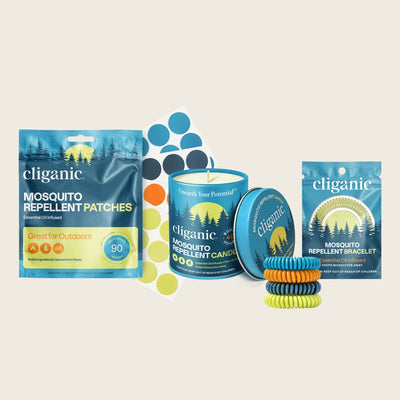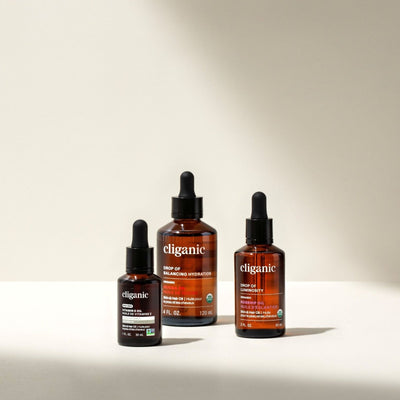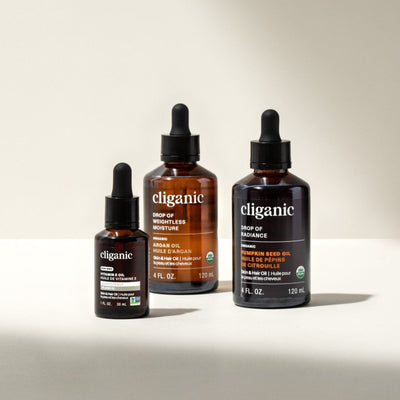21 Sep 2022
What Is Turmeric Essential Oil & How to Use It?

You’ve probably heard of turmeric as a bright orange spice that’s used in Indian curries and sauces, but it’s also a powerful essential oil. Derived from the roots or rhizomes of the turmeric plant, turmeric essential oil has a warm, earthy scent. It’s used in cosmetics and ayurvedic medicine, and touted for its skin, hair, and mood-boosting benefits.
The Plant
Turmeric comes from the roots of the curcuma longa plant, a perennial flowering plant that grows primarily in India and throughout parts of Asia. A member of the ginger or zingiberaceae family, it can grow up to three feet tall and flourishes in tropical climates. It has wide, long green leaves, purple-ish pink flowers, and thick clusters of orange roots (similar in appearance to ginger root), which are harvested to make powdered turmeric spice and turmeric oil. One of the unique things about turmeric is that it contains ar-turmerone and turmerone, which are two chemical compounds that can help the body absorb curcumin, a powerful antioxidant which is also found in turmeric roots.
Method of Extraction
The entire curcuma longa plant is pulled out of the ground and the turmeric roots are harvested by hand, and then sorted by grade and steam distilled. Steam distillation is one of the most popular forms of extraction and works by vaporizing the volatile compounds found within the turmeric roots to create a 100% pure essential oil.
Traditional Uses of Turmeric Essential Oil
Turmeric has been used for over 4,000 years in ayurvedic medicine, and for centuries in religious ceremonies and culinary applications. In India it is a symbol of peace, health, and happiness, and ground down into a paste which is used by brides before their wedding day to promote vibrant-looking skin. In the culinary world, turmeric is famous for its bright orange color and adding flavor to curries, soups, and sauces. Today turmeric essential oil can be found in many cosmetic products, supplements, and is still widely used in ayurvedic and chinese medicine.
Benefits of Turmeric Essential Oil
Skin, Hair, and Body Care Support
While the majority of people think turmeric is only good for cooking, turmeric as an oil is very beneficial to the skin, hair, and body. It can be used to cleanse the face and prevent breakouts, as well as promote more vibrant, youthful-looking skin. When combined with a carrier oil, it can be used to soothe sore muscles and achy joints. When used on the scalp, it can help to remove grit, grime, and dandruff, and promote healthy hair.

Mood Support
Beyond topical uses, turmeric essential oil can also be used in aromatherapy for mood support. When inhaled it can help balance the nervous system and promote a sense of calm. It has also been known to aid in concentration, focus, and easy breathing.
How to use Turmeric Essential Oil
For the Skin
Before using on skin be sure to combine with a carrier oil such as jojoba or argan oil.
- Combine 2 drops of turmeric essential oil with 1 teaspoon of jojoba oil and use it as a spot treatment on blemishes or irritated skin.
- Mix 2 drops of turmeric essential oil with 1/2 teaspoon of vitamin E oil, and 1 teaspoon of jojoba oil, and use it to cleanse skin and promote a brighter complexion.
- Mix 3 drops of turmeric essential oil with 3 tablespoons of jojoba oil and gently massage into sore muscles or feet.
For the Hair
- Mix 2 drops of turmeric essential oil and 1 tablespoon of argan oil and massage into the scalp to cleanse and remove dandruff. Be sure to wash thoroughly with shampoo and conditioner after to prevent hair discoloration.
For Improving Your Environment
- Combine 2 drops of turmeric essential oil with 2 drops of sage essential oil and add to a diffuser with water (as directed) to promote easy breathing and an overall sense of well being.
How to Safely Use Turmeric Essential Oil
Turmeric essential oil is considered safe, however we recommend only using Cliganic Turmeric Oil topically or in aromatherapy and not ingesting it. When using turmeric essential oil on your skin, be sure to combine it with a carrier oil and perform a patch test, as it can cause allergic reactions in some people. Turmeric essential oil can sometimes stain clothing or your skin, so it’s best to use in small amounts and always wash thoroughly after use. Take a look at this article, for more essential oil safety tips.
Final Thoughts
With a myriad of uses for the body and mind, turmeric is a powerful essential oil to add to your wellness and clean beauty routine. When pairing turmeric with other essential oils, we recommend blending it with cinnamon, orange, or ylang ylang essential oil to compliment its earthy aroma. To learn more about how you can use essential oils to relax the body, take a look at this article: 5 Essential Oils to Use in Massage.











































